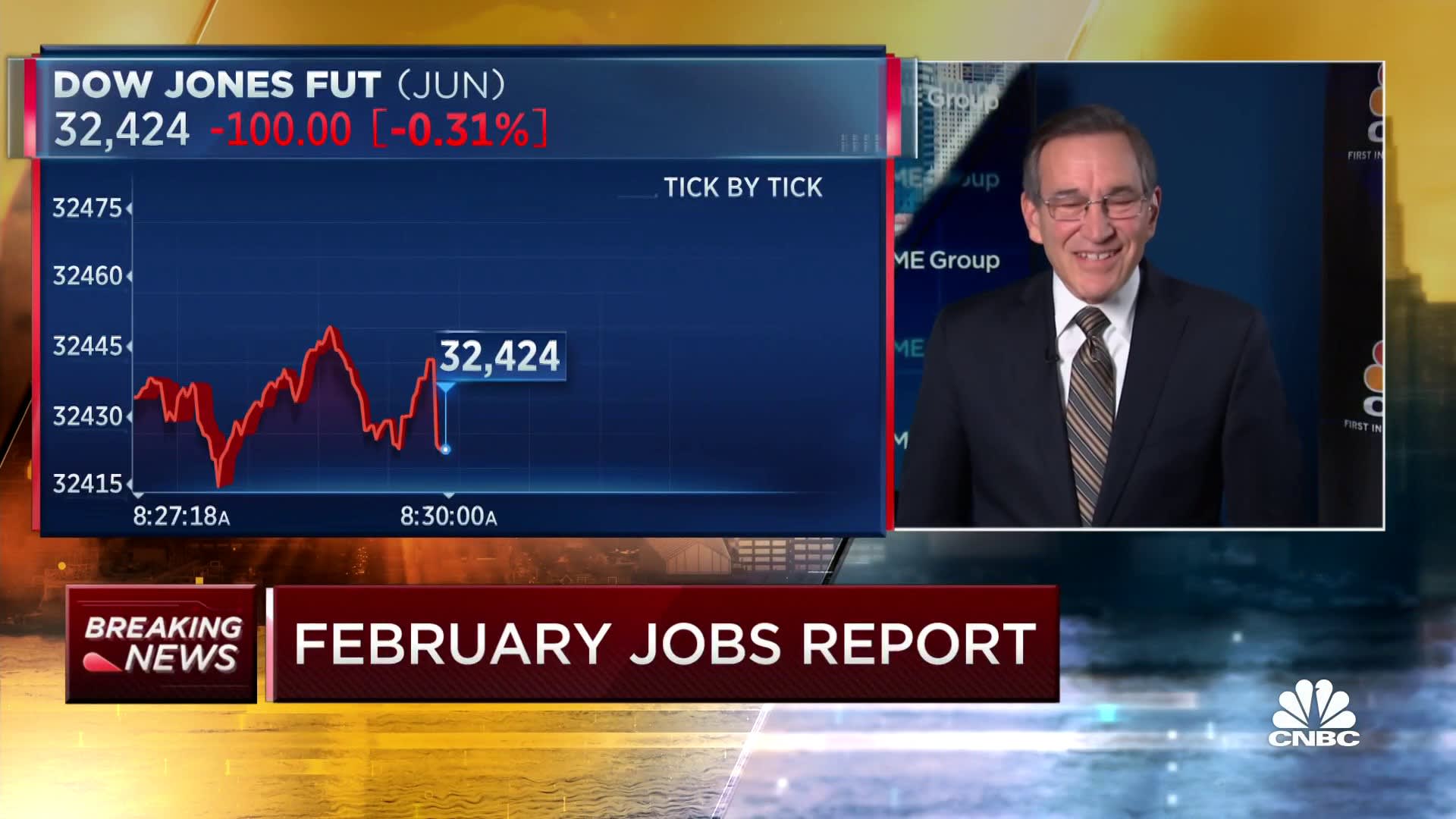
Job creation decelerated in February but was still stronger than expected despite the Federal Reserve’s efforts to slow the economy and bring down inflation.
Nonfarm payrolls rose by 311,000 for the month, the Labor Department reported Friday. That was above the 225,000 Dow Jones estimate and a sign that the employment market is still hot.
The unemployment rate rose to 3.6%, above the expectation for 3.4%, amid a tick higher in the labor force participation rate to 62.5%, its highest level since March 2020. The survey of households, which the Bureau of Labor Statistics uses to compute the unemployment rate, showed a smaller 177,000 increase. A more encompassing unemployment measure that includes discouraged workers and those holding part-time jobs for economic reasons rose to 6.8%, an increase of 0.2 percentage point.
There also was some good news on the inflation side, as average hourly earnings rose 4.6% from a year ago, below the estimate for 4.8%. The monthly increase of 0.2% also was below the 0.4% estimate.
Though the jobs number was stronger than expectations, February’s growth represented a deceleration from an unusually strong January. The year opened with a nonfarm payrolls gain of 504,000, a total that was revised down only slightly from the initially reported 517,000. December’s total also was taken down slightly, to 239,000, a decrease of 21,000 from the previous estimate.
Stocks were mixed following the release, while Treasury yields were mostly lower.
The jobs report likely keeps the Fed on track on raise interest rates when it meets again March 21-22. But traders priced in less of a chance that the central bank will accelerate to a 0.5 percentage point increase, dropping the likelihood to 48.4%, or about a coin flip, according to a CME Group estimate.
“Perhaps the best news from this report was the easing of wage pressures,” said John Lynch, chief investment officer at Comerica Wealth Management. “A drop in the largest costs for businesses is a welcome development. Nonetheless, 50 basis points is still on the table for the March policy meeting, given recent economic strength and dependent on next week’s [consumer price index] report.”
Leisure and hospitality led employment gains, with an increase of 105,000, about in line with the six-month average of 91,000. Retail saw a gain of 50,000. Government added 46,000, and professional and business services saw an increase of 45,000.

But information-related jobs declined 25,000, while transportation and warehousing lost 22,000 jobs for the month.
“It’s no longer accurate to say without reservation that the labor market is a bright spot in the economy. From 35,000 feet, the picture still looks sterling, but digging an inch beneath the surface, there are clear pockets of softening,” said Aaron Terrazas, chief economist for jobs review site Glassdoor.
Terrazas noted that hiring as slowed in “risk-sensitive” sectors. He added that, “The challenge for policymakers is that these weak points are a small part of the overall economy, but potentially have linkages lurking that have yet to emerge.”
The jobs report comes at a critical time for the U.S. economy, and consequently for Fed policymakers.
Over the past year, the central bank has raised its benchmark interest rate eight times, taking the federal funds rate to a range of 4.5%-4.75%.
As inflation data appeared to cool towards the end of 2022, markets expected the Fed in turn to slow down the pace of its rate hikes. That happened in February, when the Federal Open Market Committee approved a 0.25 percentage point increase and indicated that smaller hikes would be the case going forward.
However, Fed Chairman Jerome Powell this week told Congress that recent metrics show inflation is back on the rise, and if that continues to be the case, he expects rates to rise to a higher level than previously expected. Powell specifically noted the “extremely tight” labor market as a reason why rates are likely to continue rising and stay elevated.
He also indicated that the increases could be higher than the February hike.
Though Powell emphasized that no decision has been made for the March FOMC meeting, markets recoiled at his comments. Stocks sold off sharply, and a gulf between 2- and 10-year Treasury yields widened, a phenomenon known as an inverted yield curve that has preceded all post-World War II recessions.


